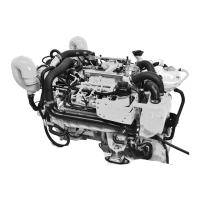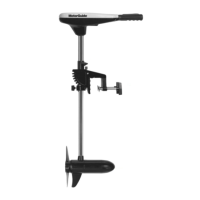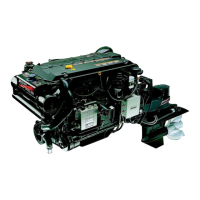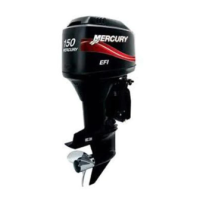2. Remove the pressure cap from the expansion tank coolant reservoir.
a - Pressure cap
b - Maximum mark
c - Minimum mark
3. Slowly add the coolant to the expansion tank. Allow the entrapped air to escape.
4. When coolant cannot be added, supply the seawater pump with water.
NOTICE
Without sufficient cooling water, the engine, the water pump, and other components will overheat and suffer damage. Provide
a sufficient supply of water to the water inlets during operation.
5. Do not install the pressure cap. Start and operate the engine at idle for approximately two minutes.
6. Add coolant if necessary to maintain the coolant at the specified level on the expansion tank.
7. Allow the engine to warm up,
8. Add coolant if necessary to maintain the coolant at the specified level on the expansion tank.
9. Inspect the O‑ring in the pressure cap for damage and replace if necessary.
a - Pressure cap
b - Over pressure valve
c - O‑ring
10. Install the pressure cap after the engine has reached normal operating temperature (with the thermostat fully open) and the
coolant level remains constant.
11. Observe the temperature gauge and check the engine for coolant leaks. If the temperature gauge indicates the presence of
excessive temperature or coolant is leaking, stop the engine immediately and inspect for the cause.
12. After the first operation, allow the engine to cool.
13. Remove the pressure cap and add the specified coolant to the level indicated on the expansion tank.
14. Install and securely tighten the pressure cap.
Section 4 - Maintenance
90-8M0133568 eng JUNE 2017 Page 43
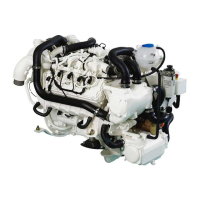
